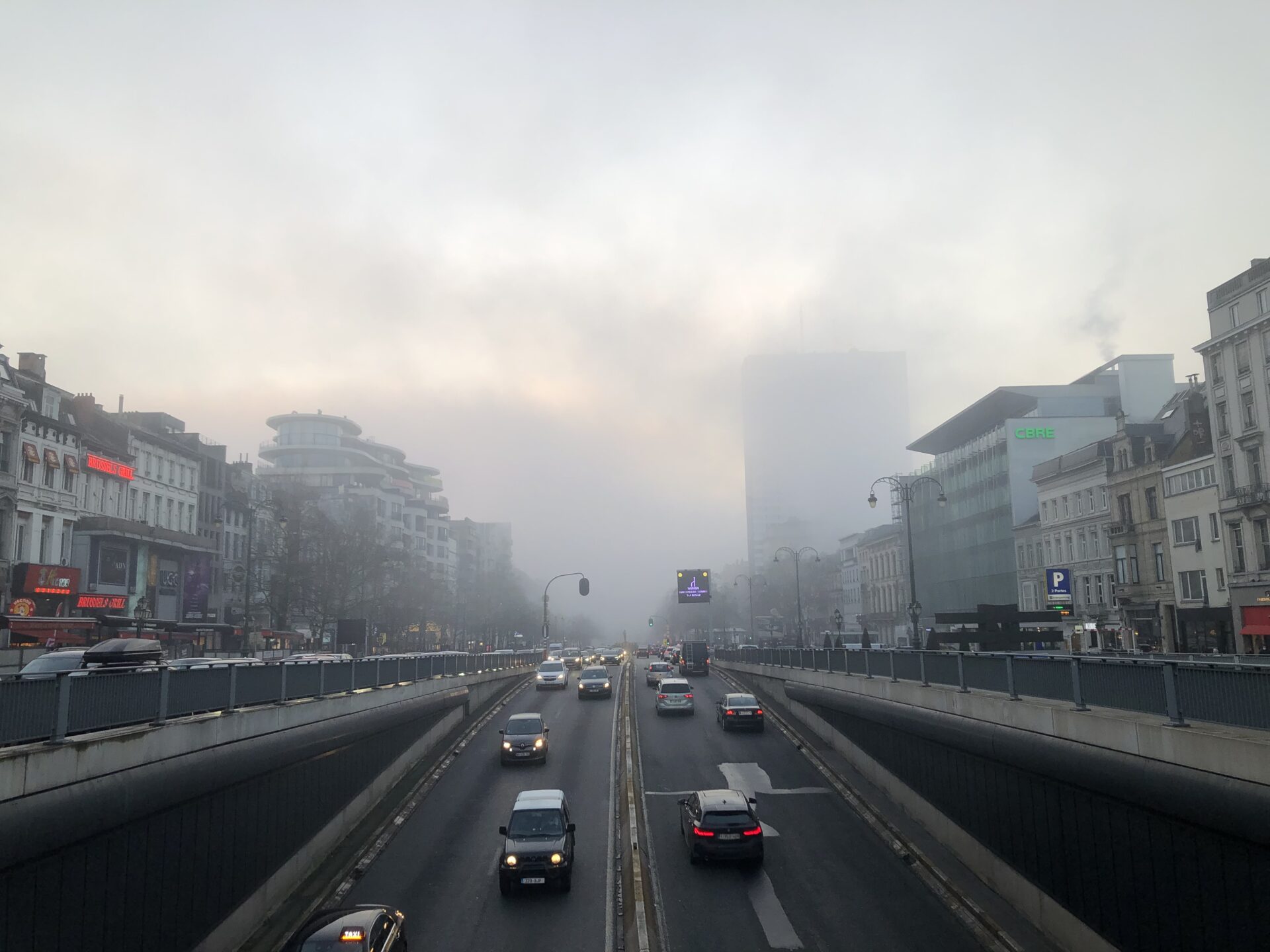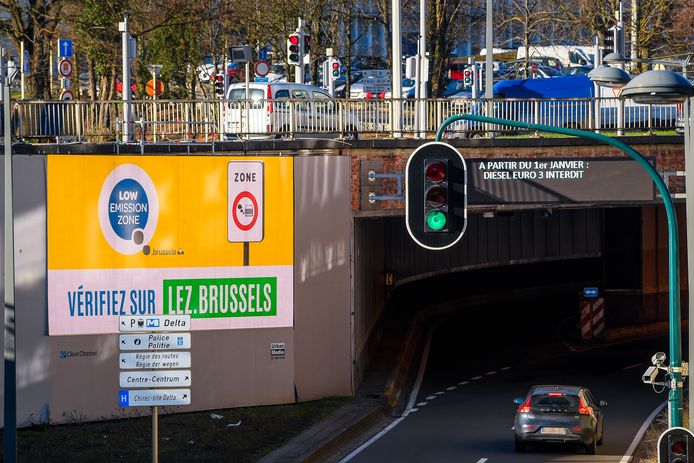Low-emission zones (LEZs), first introduced in Brussels in 2019, have significantly helped in bringing down harmful levels of air pollution in urban areas across Europe, a recent report showed.
Air pollution kills 300,000 people living in Europe each year, including 9,000 premature deaths in Belgium, of which about 1,000 occur in Brussels alone. In many cities, including the Belgian capital, road traffic is one of the biggest emitters of atmospheric pollutants contributing to harmful levels of pollution.
The rollout of LEZs — zones where access for the most polluting vehicles is restricted — to combat these high levels has helped reduce nitrogen dioxide (NO2) concentrations by around 20% in a wide range of conditions, new research published by the Clean Cities Campaign (CCC) revealed. It also showed that LEZs can improve air quality in areas outside the zones.
The findings confirmed the strong potential of LEZs with projections showing a reduction of up to 33% in NO2 pollution in Brussels. This figure was up to 44% in central London following the expansion of the Ultra Low emission zone (ULEZ) in 2019.
Impact in Brussels
The number of LEZs in Europe is growing rapidly. There are now 320 schemes in 15 countries, an increase of 40% on 2019 levels, a figure that is expected to increase to about 500 zones by 2025.
In Brussels, LEZs are slowly but surely improving the air quality by changing the face of the car fleet, as the scheme bans the most polluting vehicles.
The number of vehicles impacted by this measure expanded in July, resulting in drivers of cars, vans, buses and minibuses approved under Euro 4 standards — the last generation of vehicles that do not have to be fitted with a particle filter, meaning they are more polluting — can be fined up to €350 when driving in the LEZs.

Porte de Namur in Brussels. Credit: Ugo Realfonzo/ The Brussels Times
The latest monitoring by Brussels Environment, showed that the proportion of Euro 4 diesel vehicles dropped sharply (by about 78% since the third quarter of 2018), while the share of diesel vehicles fell to below 40% in 2022 from 62% before LEZs were established.
Between June 2018 and October 2021, this helped reduce pollution levels of nitrogen oxide (NOx) by 21%, the levels of fine particulate matter (PM 2.5) by 26% and black carbon by 59%.
The next major milestone is the ban on EURO 5 diesel vehicles and EURO 2 petrol vehicles in 2025, which will further help to reduce NOx emissions.
EU framework to tackle pollution
The CCC released the research ahead of the expected publication of the EU's Ambient Air Quality Directive (AAQD) on 26 October, which will set the legal framework for tackling dangerous air pollution for years to come.
With the report, it aims to provide more evidence of the benefit of LEZs in European urban areas, as the Commission has not included the impact they have in its official Impact Assessment showing how air pollution can be tackled, which the CCC believes is a missed opportunity.
"The update of the EU clean air laws is a once-in-a-generation opportunity to decisively cut toxic air pollution across the continent. Our research confirms that low-emission zones work," said Barbara Stoll, Director of the Clean Cities Campaign.
Related News
- Private jet ban? EU energy discussions turn blind eye to big transport polluters
- Unborn babies already affected by air pollution, research shows
"We call on EU legislators to take this strong evidence into account when they set the new air pollution limits. This is the only way to avoid the grave health impacts of air pollution as well as the hundreds of thousands of premature deaths each year."
The organisation, along with four other NGOs, has also written to ask the EU Commission calling on it to aim for the highest ambition in the AAQD based on the new limits on pollutant concentrations as defined by the World Health Organisation (WHO).

